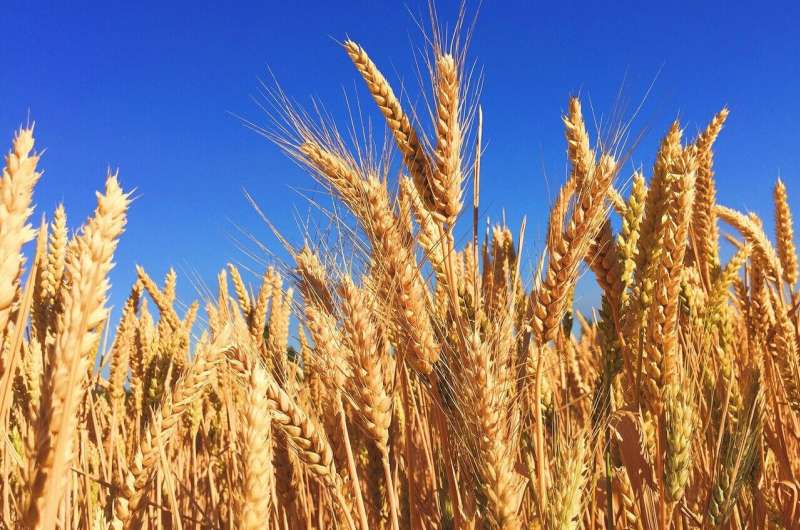Study reveals how wheat roots are quietly engineering their microbiomes

Sadie Harley
scientific editor

Robert Egan
associate editor

In an advance for agriculture, a new study reveals how wheat plants actively influence the microbial communities living on and inside their roots—and how these root microbiomes change over time depending on conditions such as drought and irrigation. These insights could guide future efforts to manage crops more effectively under varying environmental conditions.
Led by Tim C. Paulitz of the USDA-ARS Wheat Health, Genetics, and Quality Research Unit and Dr. Olga Mavrodi of Washington State University in Pullman, WA, the study was a collaborative effort involving multiple USDA-ARS and university scientists. Published in Phytobiomes Journal, brings together expertise in plant pathology, microbiology, and soil science.
Using next-generation DNA sequencing, the team analyzed bacterial communities in the rhizosphere—the soil immediately surrounding wheat roots—and within the roots themselves.
The study was conducted over multiple seasons at the Lind Dryland Research Station in central Washington, an area that receives only about nine inches of rain annually. By comparing irrigated and dryland plots over time and sampling wheat plants at key stages of growth, the researchers were able to track microbial changes both within a single season and across several years.
One of the most striking discoveries was how actively the plant participates in shaping its microbial partners.
"The plant directs the assembly and composition of microbes on its roots, much in the same way the gut microbiome in humans is determined by what we eat," said Mavrodi.
This selection process is not random—certain microbes are favored under dry conditions, others under irrigation—highlighting a sophisticated and dynamic relationship between plant and soil life.
"Our research shows that the plant is not a passive host, but rather it plays a role in selecting which microbes colonize its roots," Mavrodi added. "No other study has tracked these changes with this level of detail over such a long period in a working agricultural system."
Unlike typical short-term agricultural trials, this long-term field study captures how microbial populations evolve with repeated cycles of tilling, planting, and harvesting. It also offers a clearer picture of how root microbiomes adapt and reassemble in response to seasonal and environmental stress.
Identifying microbes naturally suited to drought conditions may one day help improve wheat productivity and resilience in water-limited regions.
"This type of research takes time, teamwork, and patience," said Mavrodi. "But it gives us insights that are directly relevant to how farmers manage their fields year after year."
More information: Mingming Yang et al, Eight Years in the Soil: Temporal Dynamics of Wheat-Associated Bacterial Communities Under Dryland and Irrigated Conditions, Phytobiomes Journal (2025).
Provided by American Phytopathological Society



















